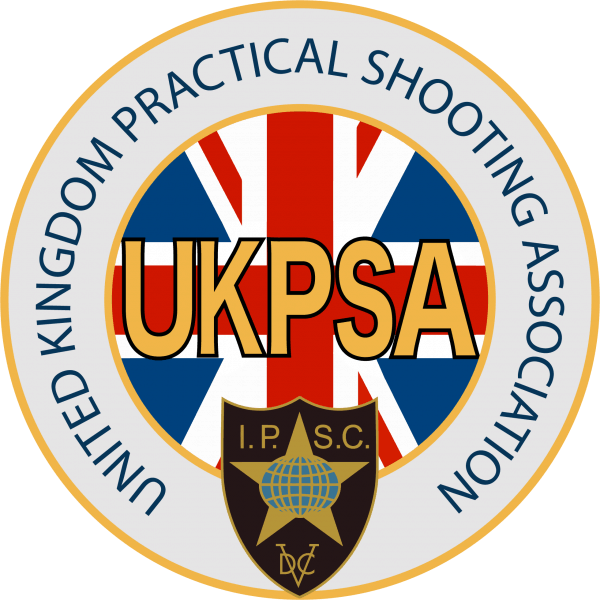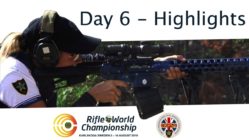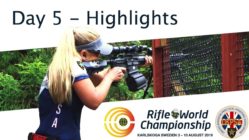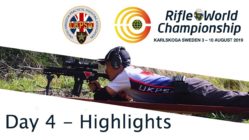After nearly 20 years away from IPSC it all started with a “moonshot goal”. To give you an idea how long ago that was – I competed against two of my heroes back in the day, the Legend that is Bob Dunkley with whom I am pleased to say I am back in touch with again, and Roger Stockbridge who was a great friend of mine.
Being able to compete for a podium result at the world shoot required a three-year plan. I started by determining exactly what I hoped to achieve:
- To excel at something I enjoy doing (my passion).
- To compete at international level in shooting competitions.
- To be on the podium at the 2023 World Shoot.
To achieve my Vision this is what I wrote in my diary:
- Establish a group of likeminded shooting friends.
- Earn my right to be part of this group.
- Create a culture of excellence, benchmarked against the best globally.
- Create a culture of exceptionalism that thrives on competition, and which continuously drives standards up.
- Improve the standard of competitions to world-class levels.
- Arranging my lifestyle to allow me to achieve this.
There were many pieces required to reach my Goal of which I will list only these:
- Dedicate sufficient time to all training.
- Arrange training days with the group.
- Match fitness – I shot every competition I could in the UK, no matter what level.
- International matches – I decided to only attend international matches in the runup to the WS for several obvious reasons.
- Encourage shooting friends to attend matches. It is important that you share the journey with interesting and like-minded travel companions.
- Most importantly – I got the full support of my wife as this was going to cost a lot of time and money.
I implement a dedicated and disciplined training regime that included:
- Dry fire to improve gun manipulation and proficiency (in 3 years I missed only a couple of days each year).
- Mental game.
- Be physically fit enough to compete for 5 days.
- An ammunition budget for each month.
The plan started badly when I cut my left index finger off in an accident two weeks after my safety course and a week after my first competition held at NCB, where I was surprised to finish on only 67% of Josh, and which set me back an entire year until I could use my hand to hold a gun again.
Being a complete PSG novice, I soon realised that I had lots to learn and, as we were in Covid, I couldn’t shoot either. I started an online chatgroup which I called “Gradatim Ferociter” which is a Latin phrase that embodies my approach to training and translates as “step by step, ferociously”. I then invited all the nearby top competitors I could find to listen to me sprout on about the preparation and mental game that, in my opinion, is required. This was well received, and I achieved my goal of enthusing a group of shooters to strive towards the WS and even more importantly I was able to shortcut my learning curve by absorbing knowledge from them and avoiding wasting time on unnecessary mistakes. You cannot do this on your own and a lot of people helped me along the way, they know who they are, and all played a significant role in me achieving my goal.
Shotgun is challenging because of the ammunition mix and understanding what ammunition worked best while learning to use my chokes properly took time. Richard Burton assisted by getting ammunition specially made – initially #5’s, and when we found out the match ammunition was going to be #6 shot we changed to that. In the end I kept things simple and settled on Full, Half, and Quarter chokes only.
One of the many problems I had to overcome was the proximity of a shooting range as North Cotes Butts is a 4-hour roundtrip. I found a local clay shooting club (DVGC) nearby, and over the ensuing months and years got them to allow dynamic shooting on the range – even if initially for only one Saturday a month. This suited me fine as I believe you should peak for major matches much like athletes do for the Olympics. I have seen many competitors believe themselves “world champions” in the years prior to the WS.
I stockpiled ammunition for 2 years so that I had enough to train with in the WS year and, in the lead up to the world shoot, I intended to “snowball” my training and spend 6 weeks at NCB shooting 500+ rounds a day to which Martin and Jonathan Appleton had very kindly agreed. This was scuppered after the first 2 days due to work commitments. By the time I got back I had about 4 weeks remaining, and this coincided with massive rain, high wind, and freezing weather for the entire time.
To compound matters DVGC stopped me from using the range to practice on. Fortunately, I was able to make alternate arrangements with a friendly landowner. Not ideal, but sufficient. All my practice was done in wellies, and with two banks of 4 targets and two target frames to act as windows. Basics only. Often shooting in rain, and always in ankle deep mud, I never shot more than 250 rounds at a time and most days stopped at 150. My diary shows I shot a total of 4225 rounds instead of the 20k I had intended to.
I spent a lot of time patterning with no-shoot targets until I was comfortable with my sight-picture out to 18m; then spent a couple of days driving down to NCB to zero for slug which we did up to 40m. At the match there was a stage that required two clays to be shot with slug from the prone position through a tiny aperture. I shot every slug stage well at the WS. Three years ago I had Mick Flatly build me a swinger that we could adjust the speed and add different targets to in anticipation of the WS – we spent a day shooting at this in different configurations and distances as the match had very fast swingers, some with penalty targets between the scoring ones.
I used all the contacts I had who had shot the handgun WS to get exact details of the range, unusual targets, barricades, target distances, maximum range size, weather, catering, hotels, travel, etc right down to the underfoot surface, to be prepared for as much as possible.
On arrival in Thailand myself, Graham Guest and Mike Siva-Jothy, my shooting buddies and travel companions, checked the ammunition on a commercial range. For some this became an odyssey with many slabs being bought and tested. I think I shot a grand total of 3 rounds of bird and 5 of slug then put the gun away. I never train after arriving at a big shoot and have seen many people lose confidence in the final week leading up to the match trying to “fix” problems real or imagined. Once you allow negative thoughts to enter your mind, you will never get over it and at that stage it’s too late and you cannot miraculously fix anything. Almost everyone that tries will crash and burn. Check your gun is working, confirm your sight picture, then put it away and relax is my advice.
There was a lot of talk about the match ammunition being substandard and giving patterning problems. I believe that the Open division guns did have a problem, but I never experienced this and nor did anyone of the other 12 competitors in my squad. They worked just fine and as good as anything I’d used previously with the slug and buffered buck proving exceptional. We shot with the Italians and the Fins.
The course of fire was, I am told, the most difficult and technical yet. Aside from the fast-swinging targets, some of which were on rails and bobbed as well, the targets were often hidden by very tight no-shoots or were at distance, or both. I shot 80% of the match using a half choke. You simply had to see your front sight and aim. Hot and humid conditions, lots of movement, many windows and very low apertures all required a decent degree of physical fitness.
Most days I shot 4 stages well and 2 not so well except for the last day which was my worst by far. In a big match you must expect “poor” stages. The trick is to limit the damage as much as possible and stay within a margin of error that isn’t catastrophic. On the last morning I made the fundamental mistake of looking at the scoreboard and determined I was lying 19’th and made the decision to push. The result was predictable. I started by hitting a no-shoot on the first stage of the day, then calmed down and shot the daily long stage OK’ish. It had been worrying me as it was a memory test with such tight no-shoot targets that I shot it with a full choke despite the furthest target being perhaps 12m away – and I was first up. The remaining 3 stages were the worst of the entire match – I think I simply lost concentration. I completely forgot advice I have given to so many, and which Jon Axe had reminded me prior to departure, which is to ignore the scoreboard, concentrate on your process, and stay in the moment. Consequently I dropped back and finished 30’th. You simply cannot chase.
I was disappointed in myself feeling that I could have shot a better match but that is the nature of these (or any) competitions and I’m sure many, if not most, feel the same about their result, with the “ifs and buts” being part and parcel of our sport and what keeps us coming back. All told, I achieved each of the goals I’d set myself 3 years previously which was to make the British team, top 30 in the world, and be on the podium. It gave me particular satisfaction when our Senior Standard Team won the silver medal and I am thankful for the support I received from my teammates: Mike Siva-Jothy, Kevin Strowger and Gareth Cooper. Team results are very important as successive WS squadding is based on where the team finishes, with the best teams squadded together.
Now that I have been there and done it, I’ve been thinking of the real motivation behind the effort. Why did I spend countless hours dry-firing virtually every day for 3 years to get my technique right? Spending all that money on a gun (the cheapest part), ammunition, travel, and particularly time spent away from my loved ones selfishly pursuing a dream? Was the motivation to win or was it the enjoyment of mastering a skill to the maximum of my potential? Ultimately I think the steps required to accomplish the goal become satisfying in themself. The WS was fantastic and I enjoyed every moment, especially meeting old friends and making many new ones along the way. Competing at an international event such as the WS is an unbelievable and life enriching experience not to be missed and I encourage all to do so if you have the opportunity.
The hardest part about continuing to “race” into your older years is realizing you were the best you’re ever going to be a long time ago but at the same time, at some point, you will enter your last match or attend your last shoot and you may not even know it at the time. Try to enjoy and appreciate each and every one! I certainly have.







